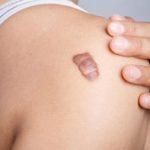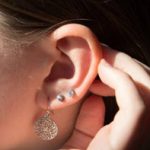What is facial feminization surgery?
The goal of facial feminization surgery, or feminizing facial surgery, is to transform the masculine features of the face to a more feminine or nonbinary appearance. Facial feminization surgery is performed as either a single procedure or as multiple staged procedures. Surgical manipulation of the bone and soft tissues of the face create a feminine appearance. There are many techniques used to perform facial feminization surgery, and many factors should be taken into consideration when choosing which options are best-suited for each individual.
Why it’s done
Many facial features, such as the eyes, jaw and brow, reflect sex differences. While other body parts can be covered or hidden, facial features are readily seen. For some transgender people who have a gender identity that differs from the sex assigned to them at birth, altering these characteristics can be essential in their transition.
Feminizing surgeries are typically deferred until adulthood.
Before facial feminization surgery, you’ll meet with your surgeon. Consult a surgeon who is board certified and experienced in the procedures.
Every person has a unique facial structure. Your surgeon will ask you about your own ideas about your face and recommend procedures that will most effectively contribute to the feminization of your face. Your surgeon will also describe your potential results.
To plan your surgery, you might need a CT scan. This will allow your surgeon to obtain detailed anatomical information. Also, your face will be photographed before surgery and at several intervals after your surgery.
The surgeon will refer you for an appointment to discuss your anesthesia. Follow the specific instructions on preparing for your procedures, including guidelines on eating and drinking, adjusting current medications, and quitting smoking. You’ll also receive instructions to follow after your surgery to improve your results.
In addition, before you can have certain feminizing surgeries, you’ll be required to meet specific criteria. To start, your health will be evaluated to rule out or address any medical conditions that might affect treatment. You’ll also need a letter from a mental health provider stating that you meet World Professional Association of Transgender Health (WPATH) standards of care criteria for facial feminization surgery
What you can expect
During the procedure
Facial feminization surgery might include:
- Forehead contouring. In cisgender men, the bony ridge above the eye sockets tends to be more pronounced. In cisgender women, the outline of the forehead tends to be higher, smoother and more rounded. To make the forehead appear more feminine, part of the forehead bone is cut, removed, reshaped and put back into place.
- Eye and lid modification. To feminize the upper eyelids, excess tissue can be cut away.
- Cheek augmentation. Cisgender women tend to have prominent round cheeks in the middle third of their faces. This is due to a greater concentration of fat in the area. To achieve a more feminine appearance, cheek augmentation can be done with implants. It can also be done by fracturing and moving the cheekbones into a different position. Or the surgeon may take fat from another part of the body, such as the belly or thighs, and place it in the cheeks to alter their size and shape.
- Nose reshaping (rhinoplasty). Rhinoplasty for facial feminization may include reducing the overall size of the nose and its angles.
- Lip lift and augmentation. Feminine faces tend to have shorter distances between the base of the nose and the border of the upper lip. Masculine faces have longer upper lips. A lip lift can shorten the distance between the lip and the nose and create a shorter, more curled lip. Lips can be enlarged with implants or fillers or by taking fat from another part of the body and placing it in the lips.
- Jaw angle reduction. Masculine jaws are typically larger and broader than feminine jaws. The jaw can be reduced and narrowed by sculpting or removing outer layers from the lower jaw.
- Chin width reduction. Masculine chins are taller than feminine chins and tend to be more square-shaped. To shorten and narrow the chin, a horizontal cut is made along the chin bone and a small wedge of bone is removed. Then the chin bone is reattached.
Other possible head and neck procedures include:
- Tracheal shave. This is a procedure to minimize the thyroid cartilage or Adam’s apple. During the procedure, a small incision will be made under the chin, in the shadow of the neck or in a skin fold to conceal the scar. The surgeon will then reduce and reshape the cartilage.
- Lowering the hairline. Feminine hairlines tend to be located lower than masculine hairlines. During hairline lowering surgery, an incision is made at the edge of the hairline. Then the scalp is raised, placed back and fixed to the bone. Excess forehead skin is removed.
- Hair transplantation. Hair transplantation can create a more feminine hairline. In this procedure, hair follicles from the back and side of the head are removed and transplanted to balding areas of the head and the temples.
You might also consider skin-tightening surgery, such as a face-lift or other treatments.
After surgery, expect to experience pain, redness and swelling in your face, most noticeably in your eyes, nose, jaw and chin. Avoid overexertion for one month. You can begin moderate exercise within 3 to 6 months.
Chewing and swallowing might be difficult due to incisions and swelling. Your surgeon might recommend that you work with a nutritionist to make sure you get enough nutrients following surgery. A healthy diet is an important part of your recovery.
Results
Definitive and stable results might not appear until up to a year after facial feminization surgery. During your recovery period, you’ll continue to talk to specialists involved in your treatment about the evolution of your facial features and any concerns you might have.
Risks
Like any other type of major surgery, many types of feminizing surgery pose a risk of bleeding, infection, damage to nearby structures, an imbalance in facial features and an adverse reaction to anesthesia. Other complications might include:
- Suture rupture along an incision line
- Visible scarring
- Fluid accumulation beneath the skin
- A solid swelling of clotted blood within your tissues
- Dissatisfaction with appearance after surgery
- A facial nerve injury
Additional surgery may be needed to correct an imbalance in facial features and improve the final outcome.































